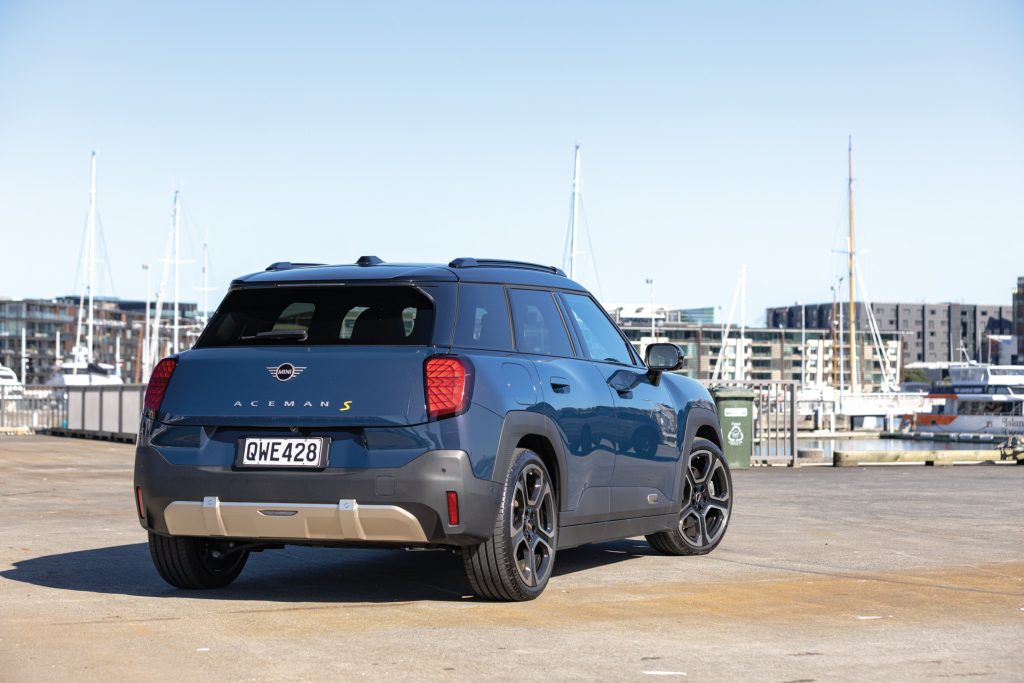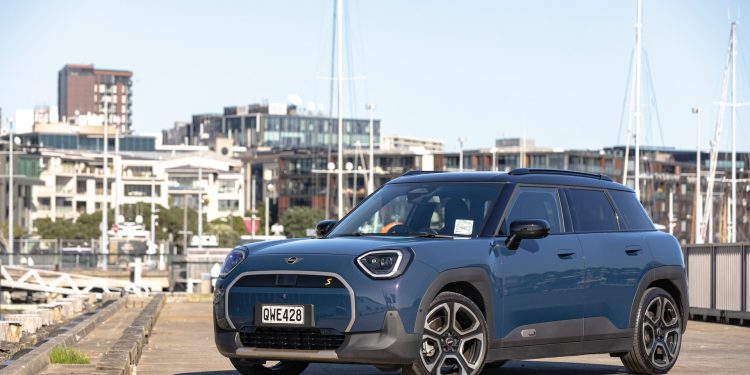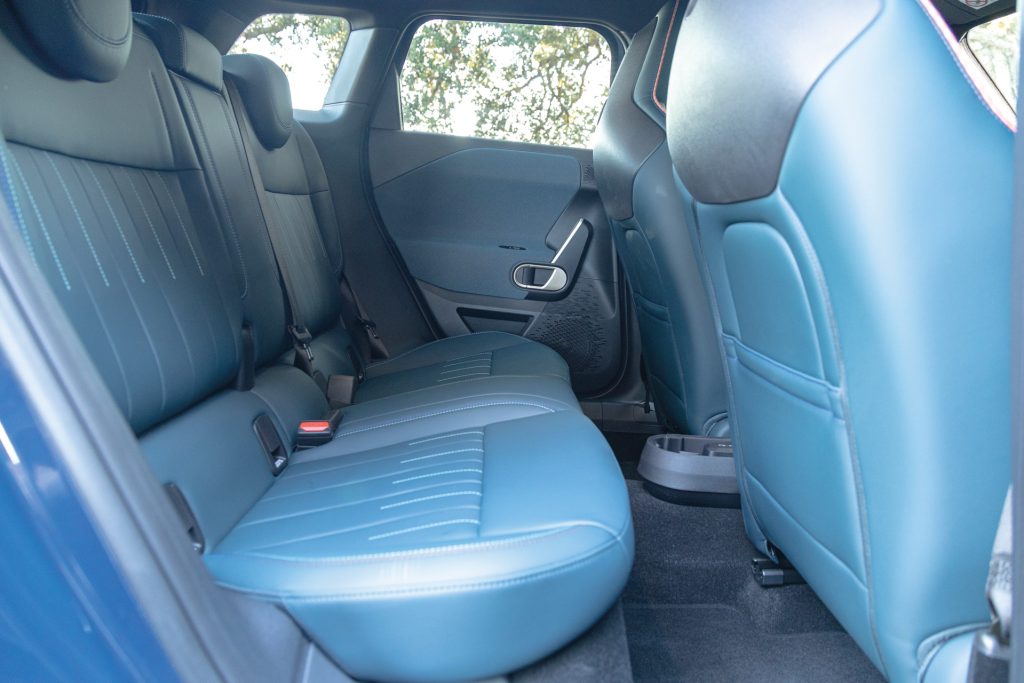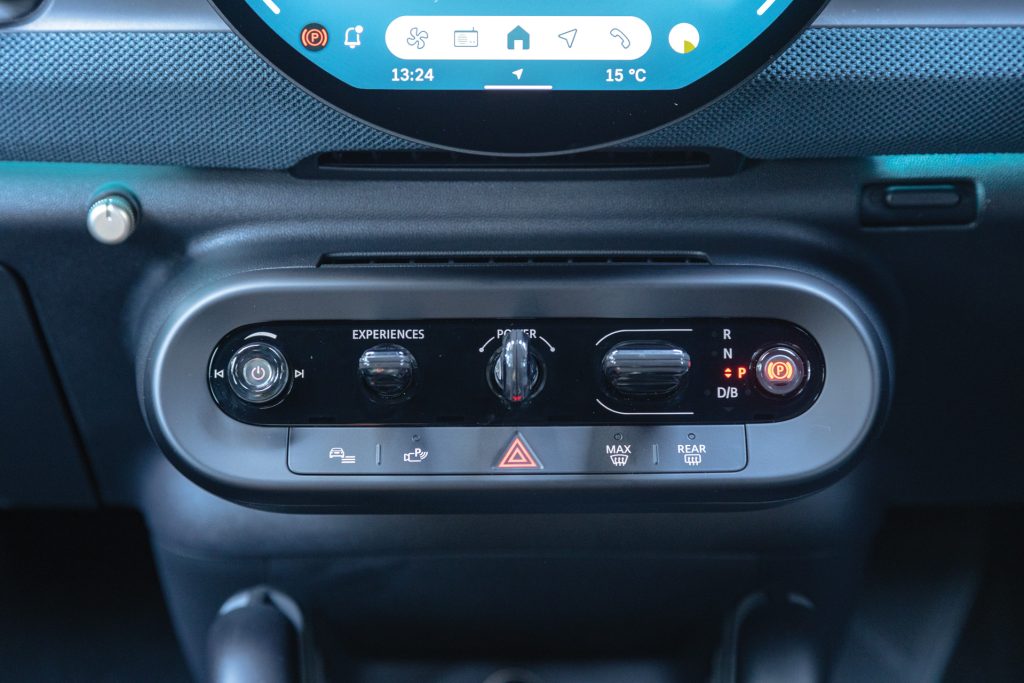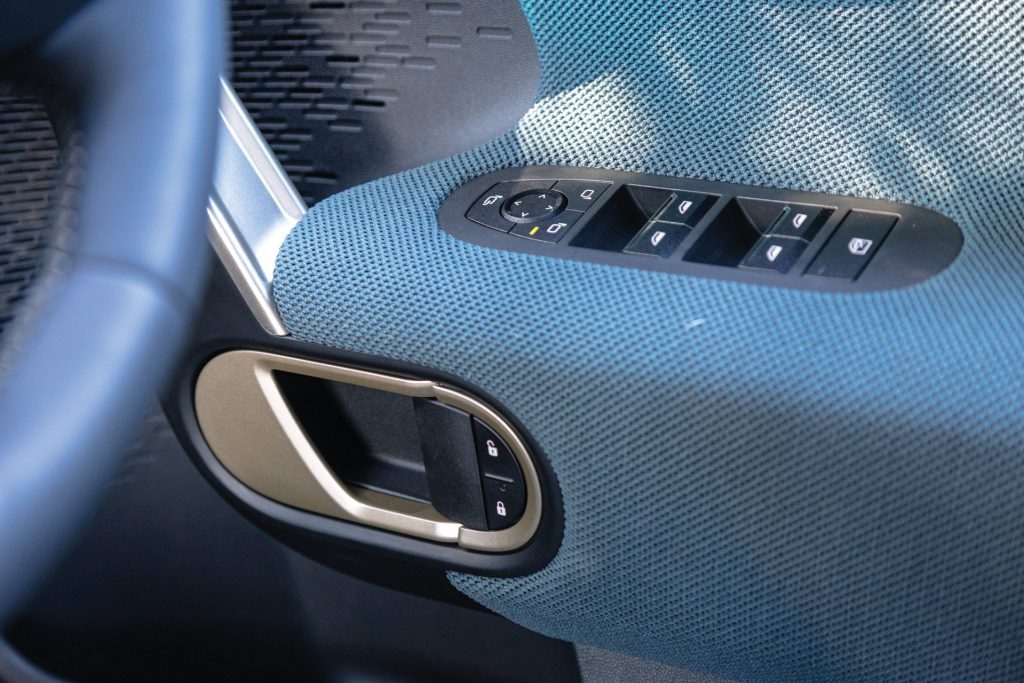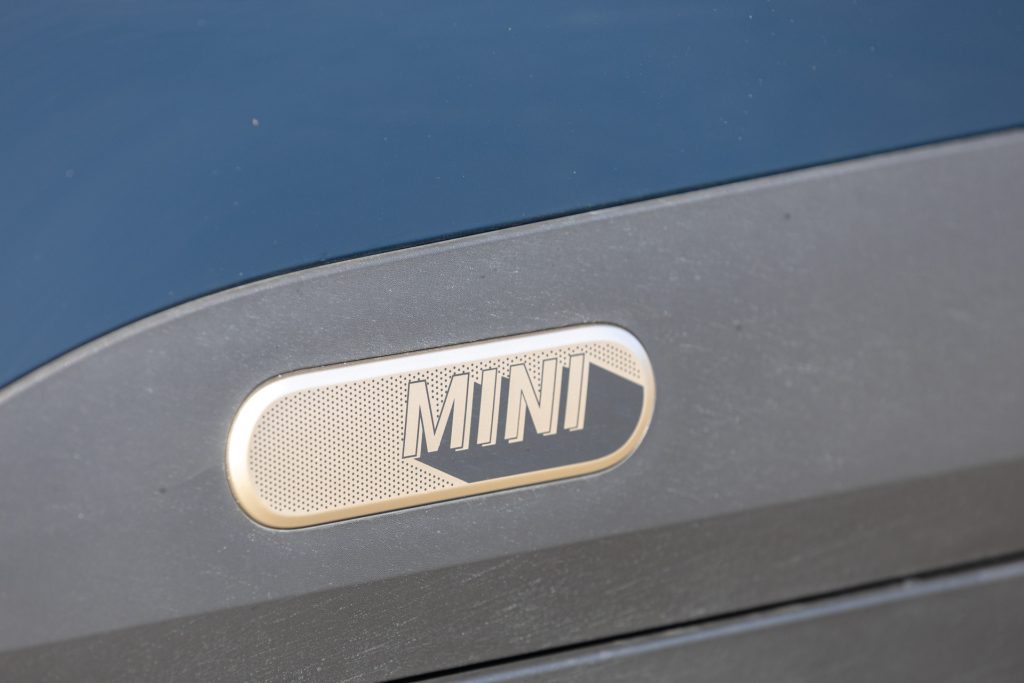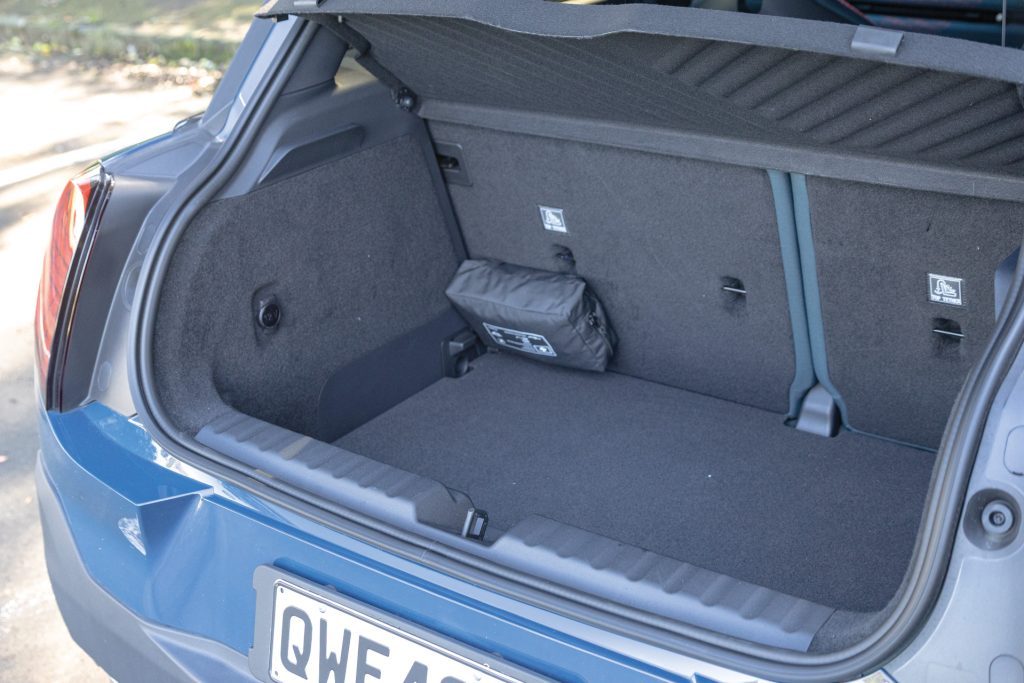2025 Mini Aceman SE Favoured Review
Words: Peter Louisson | Photos: Alex Schultz
The Aceman is something new from Mini. Think of this as the electric alternative to the ICE-powered Cooper 5-door, with a whiff of crossover.
Mini has created another 5-door, this one electric only, because there’s clearly demand for these more practical machines compared with the three-door Cooper. The smaller car is really for singles, couples without kids and a pet instead, or retirees (the young at heart with actual money). But small families are shut out from the three-door.
Moreover, being a part of the wider BMW group, Mini isn’t afraid of having some models that are fully electric without an ICE power option. But they cover their bases neatly. There are similar ICE power models for those who can’t be bothered with/don’t have the facility for home charging.
So think of the Aceman as being the electric equivalent of the ICE power-only Mini Cooper 5-door. And while they might be similar in size (4036x1744mm Cooper vs 4079x1754mm Aceman) they look somewhat different; the Aceman with Countryman-like eyes and exaggerated body cladding.
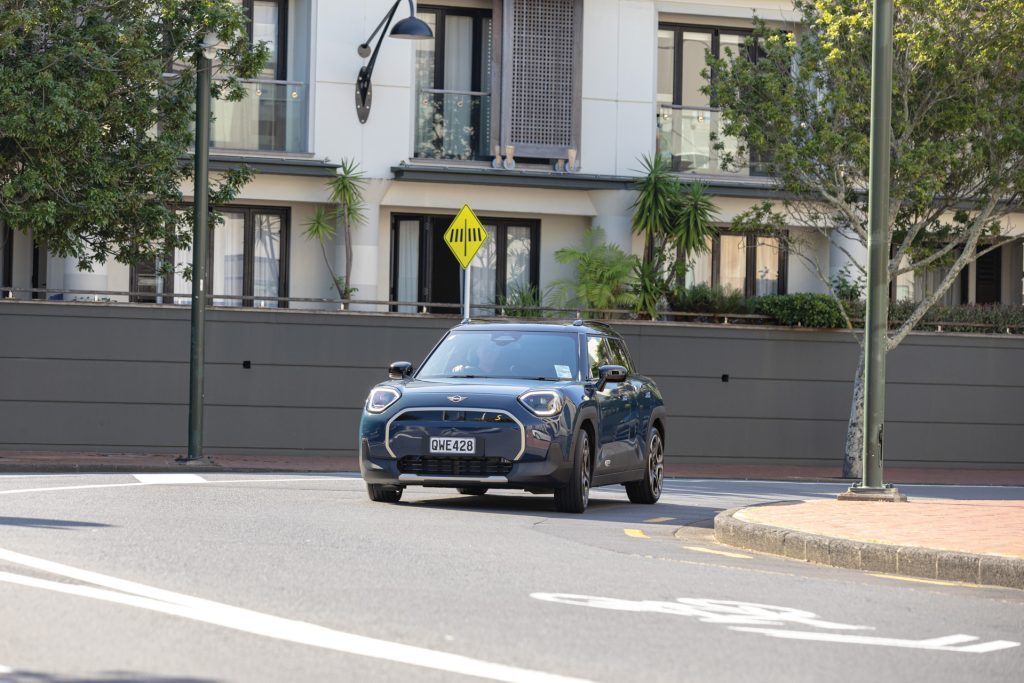
The cost disparity remains in that the equivalent ICE power machine is $10k less than the SE variant of Aceman you see here ($69,990). So you still pay more for that new-fangled battery tech, although the price gap is slowly narrowing. And now that the Chinese are going down the sodium-ion battery wormhole, expect electric cars to undercut ICE power cars in the not-too-distant future, even if their range isn’t as great.
The SE pictured here is the middling version of three available. At just on $70k in Favoured trim, it isn’t inexpensive when you consider what else you can buy with this size battery and potential range. However, being a Mini it has plenty of premium items, even if the head-up display is only of the pop-up polycarbonate variety (good clarity though), and the sunroof doesn’t do any opening. Fancy items include leather-like upholstery for the heated sports seats, a premium head unit, doors that self-lock and unlock according to key proximity, contrasting roof paint, heated wheel, that kind of pleasant thing.
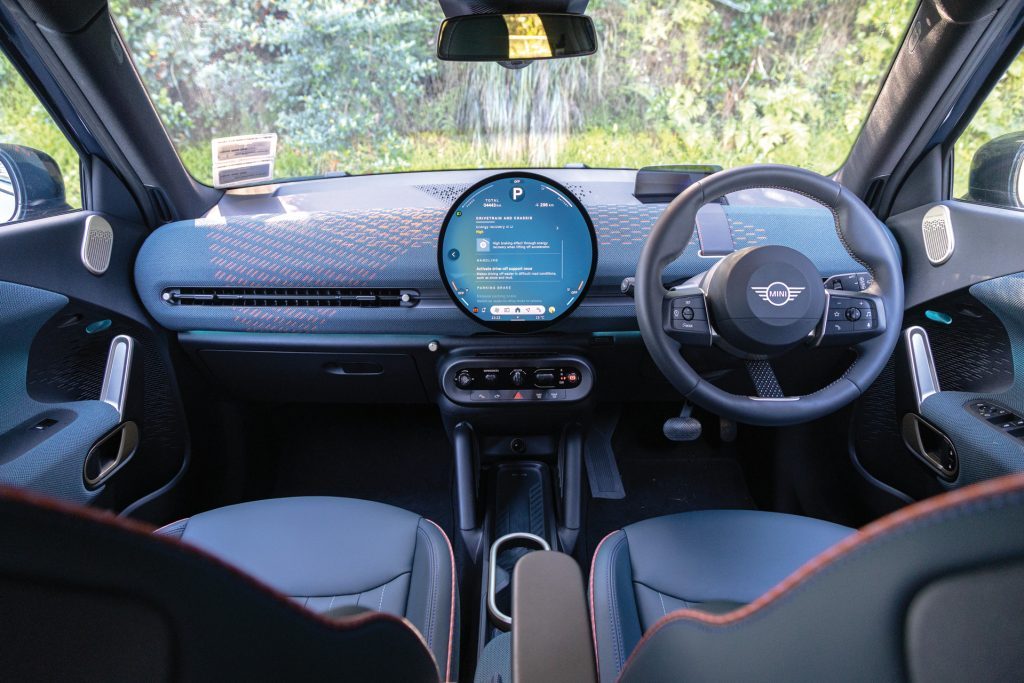
Is Aceman E the go?
You can buy a less expensive Aceman E if you want but it isn’t that much cheaper at $63,990, and has less battery size/range and overall performance compared with the SE. The battery pack offers 39kWh usable and there’s range of ‘up to’ 310km. Its 135kW/290Nm motor delivers 0-100 performance of 7.9sec. So none of these figures is exactly startling but then for those living and travelling only in the city, that might not matter and the $6k step up to the Aceman SE might not seem warranted.
However, in the scheme of things $6k isn’t a whole lot extra for much better range and added performance. The ‘up to’ 405km per charge may almost be possible in mainly urban use. We never saw anything more than about 340km to a full charge because this is a press vehicle and other pilots will have been pressing on. That said, we managed a trip up north to Mangawhai, a few outings in the area, and the return journey to the big smoke. Even then, there was still 100km or 30 per cent of range remaining. So some might not feel that the range is limiting.
Not only is SE better equipped (oddly labelled simply S on the car) but it also gets a bit more in the way of mumbo. It features a 160kW/330Nm motor, and its battery pack is good for 49kWh (54kWh gross). SE is nearly a second quicker than E to 100km/h (claim 7.1sec, actual 6.8sec). Mini rates overall energy consumption at 15.1kWh/100km and damned if we didn’t see that for much of the trip back to Auckland, with speeds averaging 80-105km/h. Helping is a kerb weight that is relatively demure for an electric offering at 1710kg. A recharge takes half an hour using a 95kW fast charger. Figure on 5.5 hours at home with an 11kW wallbox.
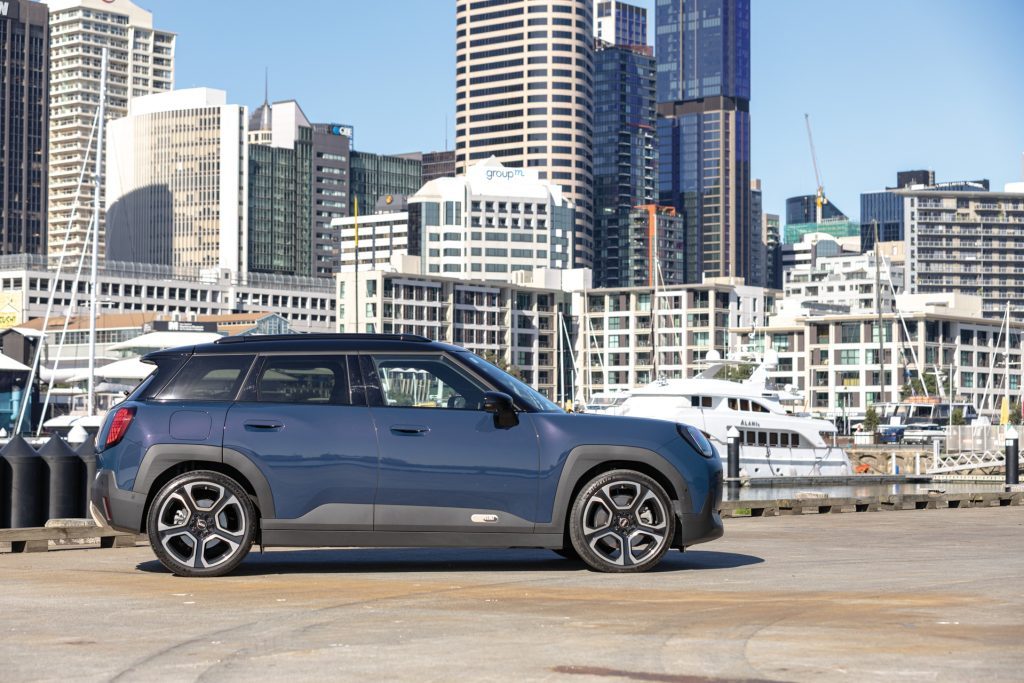
Happy camping
Like anything Mini there’s a lot to like and not too much to moan about here. Its obvious point of difference isn’t actually that different once you become used to that big retro-round OLED screen in the central dash. There’s no instrument in front of you per se; just the head-up display (more like: straight ahead display, in reality). The central screen is the overseer and controller and while it looks different superficially from the usual four-sided touchscreen, there are still menus, apps, submenus and such; still plenty to distract. Though for some reason – probably someone had turned it off – it never seemed to chide me for looking away from what’s up ahead. It did bong quietly each time we exceeded the local speed limit but you can turn that off too, if you can be bothered.
A special feature that we never tire of is the proximity locking and unlocking – thanks for passing that on BMW. It’s really rather handy if you’ve an armful of shopping or clobber and you’re not quite sure where the key is. And the other noteworthy feature is that this rides better than the similarly sprung three-door Cooper SE. At just $3k more, the Aceman SE seems much better value to us, at least in the sense that it is vastly more practical. And it still has the same or similar dynamic chops to the three-door. It’s just not as jumpy over the bumps. Still firm-ish but the effect of the 80mm of added wheelbase is palpable.
Hop on in (or more accurately ease on down) and the chairs up front borrowed from the JCW Aceman are powered and plush. Even the lumbar pump is exceptional, great if you have lower back issues.
Is the JCW worthy?
And while we’re on about JCW, probably best to mention now that there’s an Aceman variant of this as well. However, it isn’t quite the rip-snorting thing you might be thinking of if you’re used to ICE-powered JCW Minis. This has only moderately more power than the SE (an extra 30kW and 20Nm, while 0-100 is 7sec instead of 7.1sec). It features the same smallish 49kWh battery. So it only manages ‘up to 355km’ of range. For which the ask is $75,990. Doesn’t quite seem the value that stepping up from the E to the SE is. Though doubtless it will manage closer to 6.5sec for the sprint to 100km/h.
But even JCWs like Countryman get a whole lot more power and torque than this, well over 200kW and 400Nm. And that JCW variant gets to 100 in around 5.4sec. However, it deploys the power through all four wheels whereas JCWs in smaller Minis (like the Aceman, for instance) are front-wheel drive only. A dual-motor AWD JCW Aceman might have been nice but maybe is not possible with this platform.
Essentially then, opt for the SE if you need more range and performance over the E. Only go for the JCW if you simply must have that badge because in this instance you’re not getting much more in the way of anything other than kudos.
Mini Aceman SE Favoured
$69,990 / 15.1kWh/100km / 0g/km
0-100 km/h 6.83s
80-120 km/h 4.33s (123.4m)
100-0 km/h 38.42m
Speedo error 98 at an indicated 100km/h
Ambient cabin noise 70.1dB@100km/h
Motor output 160kW / 330Nm
Battery 49.2kWh
Range 405km
Drivetrain Single-speed auto / FWD
Front suspension Mac strut / sway bar
Rear suspension Multilink / sway bar
Turning circle 11.1m (2.2 turns)
Front brakes Ventilated discs
Rear brakes Discs
Stability systems ABS, ESP
Safety AEB, ACC, BSM, LDW, RCTA, ALK, AHB
Tyre size f/r-225/40R19
Wheelbase 2606mm
L/W/H 4079 / 1754 / 1514mm
Track f-1522mm r-1521mm
Luggage capacity 300-1005L
Tow rating 750kg braked
Service intervals Variable
Warranty 5yrs / 100,000km
ANCAP rating Not yet tested
Weight (claimed) 1710kg
